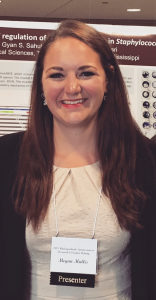Active microbial community survival in Mariana Forarc sediments
Abstract
The marine deep subsurface is one of the largest unexplored biomes on the planet. Subsurface sediment from International Ocean Discovery Program Expedition 366 to the Mariana Forearc serves as an ideal location to explore microbial community structure, function, and methods for survival. Mariana Forearc includes serpentine mud volcanoes along a ridge that were characterized as methanogenic, sulfidic, and high pH. The objectives of this expedition were to analyze the sedimentary microbial populations and evaluate their contribution to the surrounding geochemistry. This project addresses these objectives while providing insight into survival within this extreme environment.
Biography
My interest in microbial competition and survival began as an undergraduate at the University of Southern Mississippi. I studied marine biology and conducted research in Dr. Mohamed Elasri’s lab. My research focused on Staphylococcus aureus and its ability to persist against antimicrobial compounds. This foundation led me to pursue my PhD with Dr. Brandi Kiel Reese at Texas A&M University – Corpus Christi. I am generally interested in microbial community function and survival mechanisms within natural environments. My project focuses on the serpentinizing seamounts of the Mariana Convergent Margin from the International Ocean Discovery Program Expedition 366. I will be using culture dependent and culture independent analyses using sediment across the ridge and the flank of the seamounts to determine how and which microbes survive within subduction zones.







